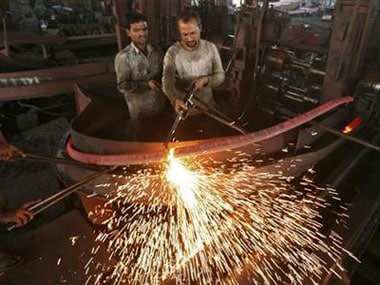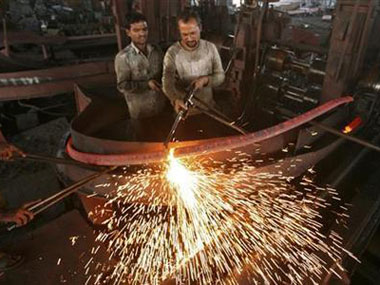Goods and Services Tax (GST) is back in the news as the government is doing all that it can to ensure its implementation from April 2016 onwards. The politics of GST is one issue, but more importantly the implications need to be understood so that we know what to expect. The general euphoria around the bill is that the GST will be a solution to the problems that we have and it will be a boom time for industry. As a corollary, it has been argued that GST will pep up the rate of industrial growth and GDP. From an economic standpoint, we are not sure as to what would be the single rate GST applied for all goods and services. There is talk of compensation to states over 5 years with the intensity coming down from 100% in the first 3 years to 75% and 50%. While this sounds okay in terms of administratively balancing the revenues across government entities, will this mean that the Centre will pay from the taxes it collects or will have to dip into its other income? This is critical because the tax rate will determine how the money flows. [caption id=“attachment_2238034” align=“alignleft” width=“380”]  GST is a good concept needed for enhancing efficiency in the economy. Reuters[/caption] The tax rate is yet to be finalised. As of now, the Centre could be imposing an average rate of 12% and the states another 12% even though this varies across commodities and states. Various suggestions have been made ranging from 12% to 27%. One is not sure as to what would be the final number. As most taxes are value added in nature, the pain of cascading has already been reduced over time. The way to look at it is whether the final incidence will be higher or lower than what is being paid at present on an average. Unless this is virtually the same, only then can we have a situation where the same amount of tax is collected which will enable compensation or states losing out under the new dispensation without causing distortions. The GST already talks of an additional 1% for the producing states as the tax would be in the consuming state. If revenues on balance remain neutral for both the sets of entities, then we may assume that the status quo prevails and the tax on a product or service is the same. Industry gains as administratively it becomes easier for them to pay a single tax rather than move papers through a series of windows. There will be time saved in tax payments, movement of goods and corruption, which will lower costs and improve profitability. Today a lot of time is spent at octroi posts when goods are moved which eventually increases the cost of transportation that feeds finally into the product price. By making this system more efficient, there will be savings. However, this looks too idealistic to be true at the practical level and the final incidence could lead to an increase in prices as the collections will end up being higher. Service tax, for example, is at present around 14%. Bringing it on par with the general level will mean a higher tax rate pushing up prices. Further, experience shows that even when tax rates come down, the impact on final price has been minimal under normal circumstances. It is only when there is slack demand that a duty benefit invoked by the government, as in the case of automobiles, the benefit is passed on. Hence, GST can be inflationary on the whole with services in particular becoming more expensive. But, this may not get reflected in the WPI. The other issue is growth. There are several estimates to show that the GDP will increase by 1-2 percentage points which actually means that we are looking at a growth rate of 7.4% moving to 8.4-9.4% over a period of time on account of this tax. This is hard to accept because a GST is efficient and will lead to higher production, provided it was not being made available due to high and complex tax structures. We have usually had a demand problem and rarely are we caught in a situation where producers cannot meet demand because of tax vexatious issues. While costs will reduce substantially and profitability improve especially at the ports and octroi posts as well as the various tax departments, with the incidence of giving bribes also coming down, it may not lead to higher GDP except at the margin. On the positive side, an outcome could be in terms of compliance with the tax. Today several taxes are dodged because of the cumbersome nature of transactions. It has been argued that once these transactions come into the fold, overall revenue will also increase and the corresponding output which is reported would get included in the aggregate production and hence, GDP. But this will not mean actual increase in production but merely enhanced accounting for the same. There is merit in this argument and it would be right to an extent, though one has to wait and see the magnitude of the same. Here again it has to be viewed with caution as anyone suddenly entering the tax stream with a record of being in business and not paying tax or paying lower tax runs the risk of being identified. Therefore, again at the margin there will be an improvement in collections, though care should be taken not to overstate the same. Hence, on the whole, the GST is a very good concept needed for enhancing efficiency in the economy. Two issues that have to be sorted out are the rates, which can be inflationary on the whole and sharing of tax revenue with states. A revenue and inflation neutral tax rate is ideal, but may be a challenge to pinpoint at this stage. While compliance will increase bringing more output into the formal system, we should not bet too much on our GDP increasing significantly – and most of what happens will be due to better reporting rather than incremental production through such an incentive.
A revenue and inflation neutral tax rate is ideal, but may be a challenge to pinpoint at this stage
Advertisement
End of Article
Written by Madan Sabnavis
Madan Sabnavis is Chief Economist at CARE Ratings. see more


)

)
)
)
)
)
)
)
)



